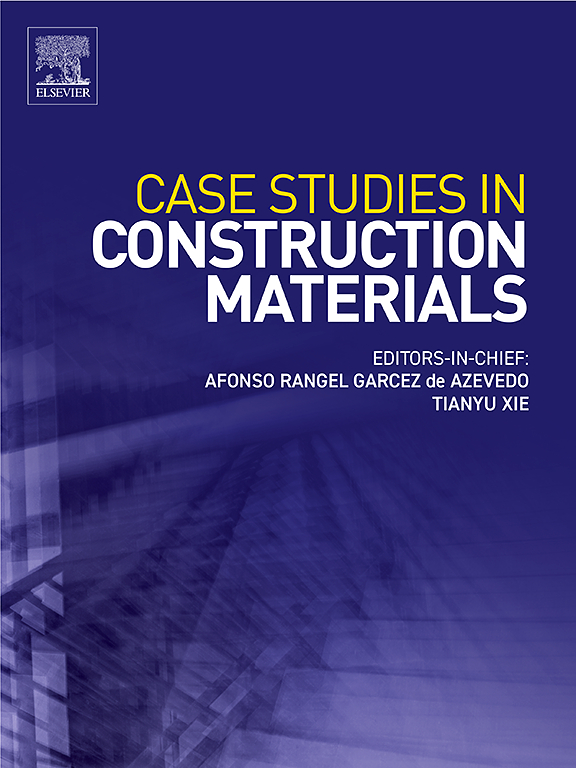竖向粘接预应力拼装四分壳混凝土塔的抗扭承载力
IF 6.6
2区 工程技术
Q1 CONSTRUCTION & BUILDING TECHNOLOGY
引用次数: 0
摘要
预应力拼装混凝土塔架是目前陆上大型风力发电机组常用的一种支撑结构形式。然而,很少有研究粘接对这种类型的混凝土塔的力学性能的影响。本文通过有限元分析,研究了带粘接垂直节点的四分之一壳混凝土塔的破坏机理和抗扭能力。详细讨论了两种典型荷载情况下竖向节点的破坏顺序及其对水平节点应力分布的影响。此外,将自由扭转模型和约束扭转模型计算的扭转能力与仿真结果进行了比较,并解释了两者之间的差异。研究发现,在扭转非线性阶段,水平节点上的压应力分布不再符合平截面假设,将混凝土段视为薄壁构件是不合适的。约束扭转模型可以较好地评价环塔的整体扭转能力,但不适用于后壳塔。四分之一壳塔的抗扭能力由变截面位置以下几段竖向节点的强度决定,而不是由水平节点的强度决定。本文的研究结果有望为风电行业混凝土塔的合理设计提供参考。本文章由计算机程序翻译,如有差异,请以英文原文为准。
Torsional capacity of prestressed assembled quarter-shell concrete tower with adhesive bonded vertical joints
Prestressed assembled concrete tower with adhesive bonded vertical joints is currently a prevailing type of supporting structure of large-scaled onshore wind turbines. However, few works have been done to study the effect of the adhesive bonding on the mechanical behavior of this type of concrete towers. In this paper, the failure mechanism and torsional capacity of a quarter-shell concrete tower with adhesive bonded vertical joints were studied through finite element analysis. The failure sequences of the vertical joints in two typical load cases along with their influence on the stress distributions on the horizontal joints were discussed in detail. In addition, the torsional capacities evaluated by the free torsion model and constrained torsion model were compared with the simulation results, and the differences among them were explained. It was found that in the nonlinear stage of torsion, the compressive stress distributions on the horizontal joints no longer comply with the plain section assumption, and it is inappropriate to regard the concrete segments as thin-walled members. The constrained torsion model can be employed to evaluate the torsional capacity of whole ring towers quite well, but does not apply to quarter-shell towers. The torsional capacity of the quarter-shell tower is determined by the strengths of the vertical joints in several segments below the position of variable cross-section, rather than by the strengths of the horizontal joints. The results presented in this paper are expected to facilitate more rational design of concrete towers in the wind power industry.
求助全文
通过发布文献求助,成功后即可免费获取论文全文。
去求助
来源期刊

Case Studies in Construction Materials
Multiple-
CiteScore
7.60
自引率
19.40%
发文量
842
审稿时长
63 days
期刊介绍:
Case Studies in Construction Materials provides a forum for the rapid publication of short, structured Case Studies on construction materials. In addition, the journal also publishes related Short Communications, Full length research article and Comprehensive review papers (by invitation).
The journal will provide an essential compendium of case studies for practicing engineers, designers, researchers and other practitioners who are interested in all aspects construction materials. The journal will publish new and novel case studies, but will also provide a forum for the publication of high quality descriptions of classic construction material problems and solutions.
 求助内容:
求助内容: 应助结果提醒方式:
应助结果提醒方式:


